When gardens produce abundance, they create habitat for other living things. Plants, animals, insects and fungi interact with each other to create ecosystems.
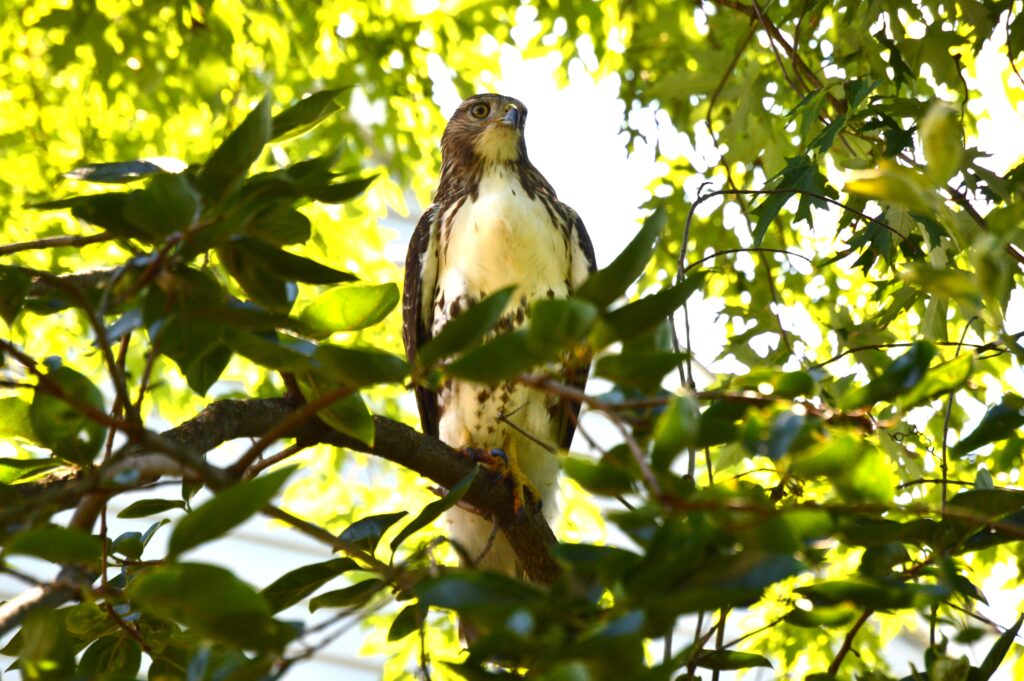
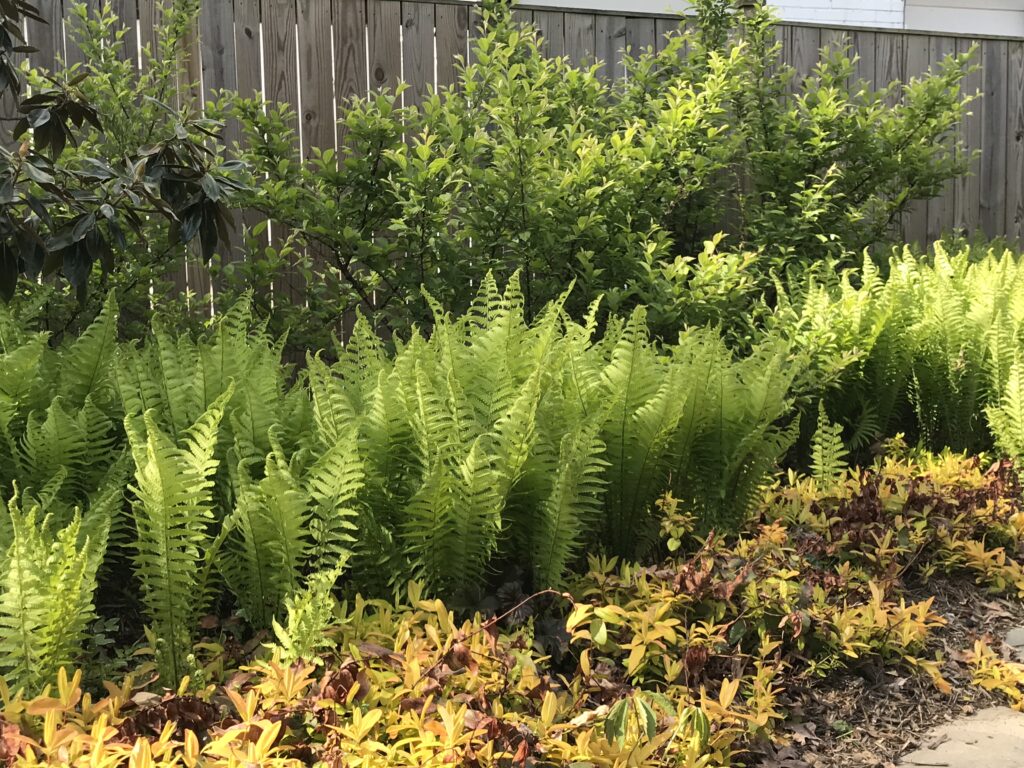
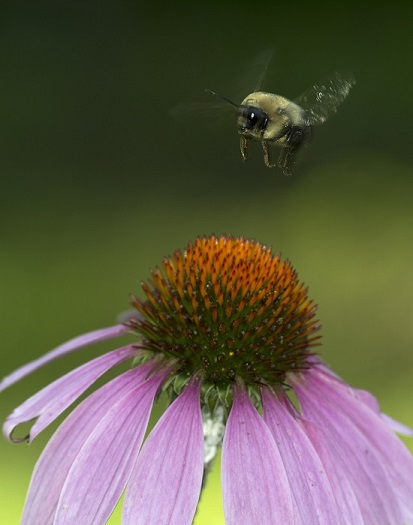
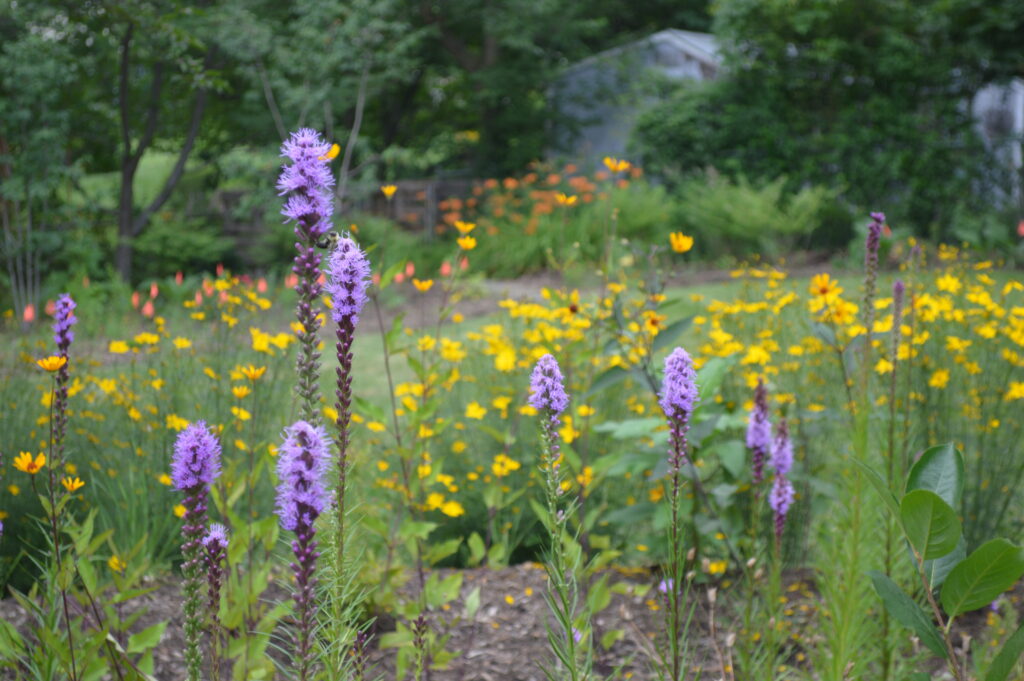

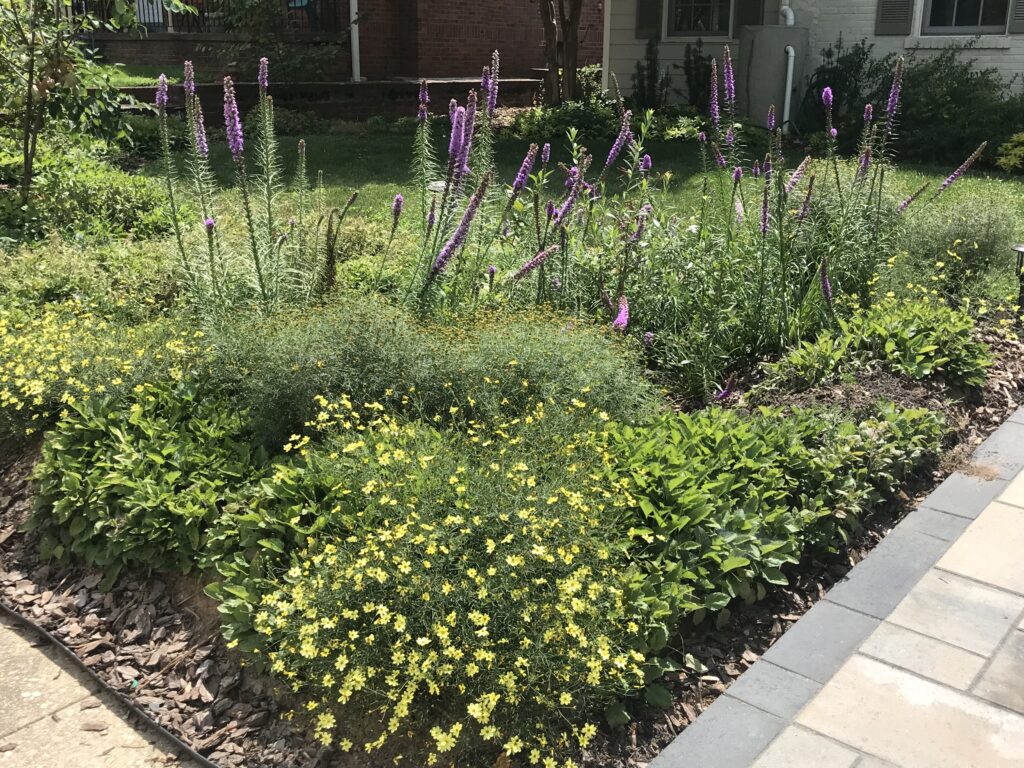
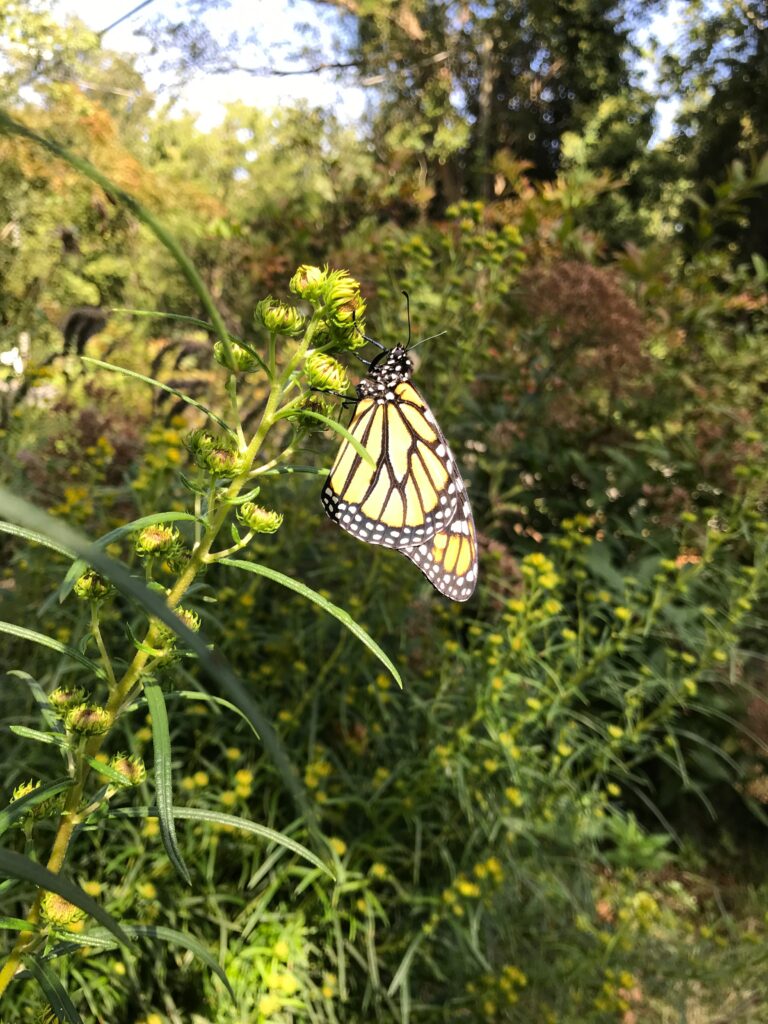
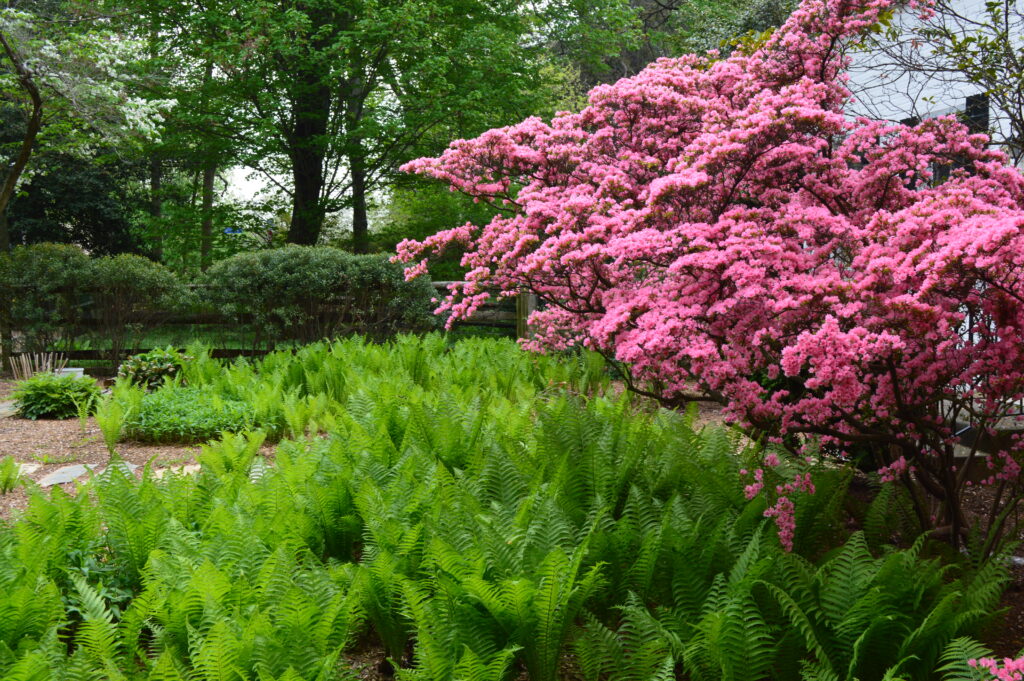

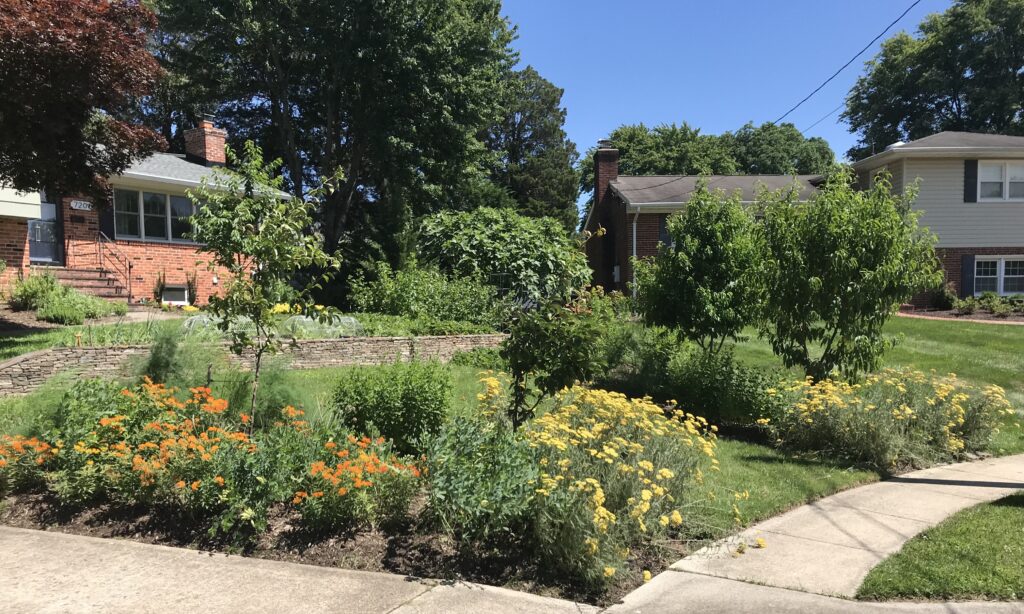
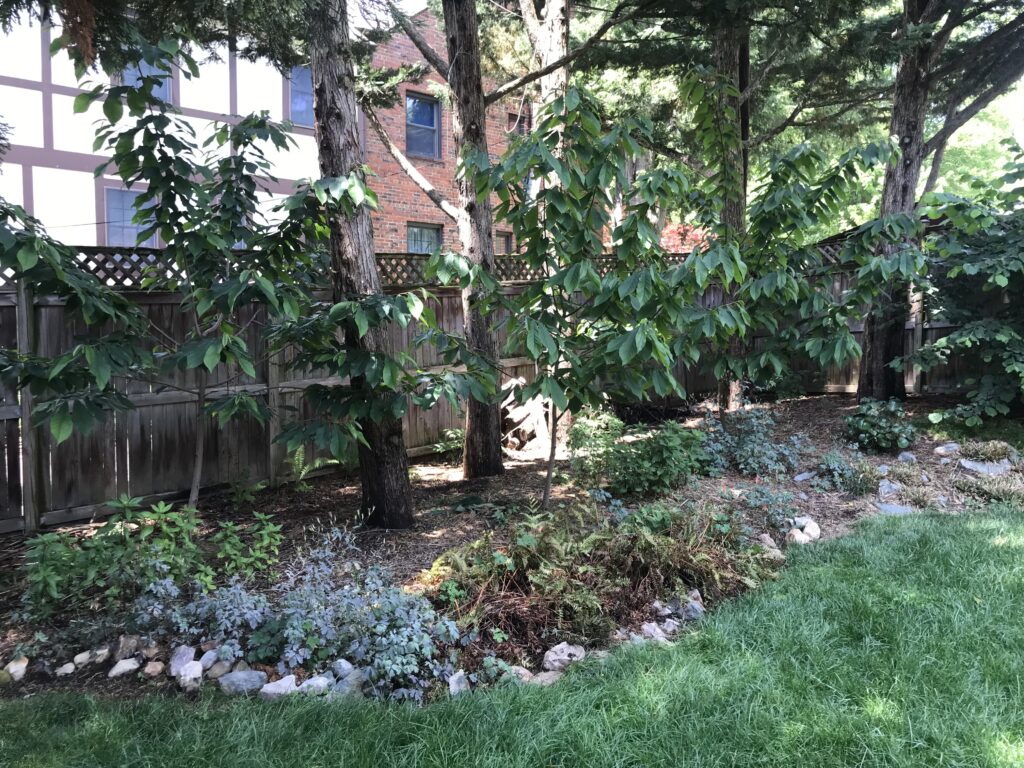
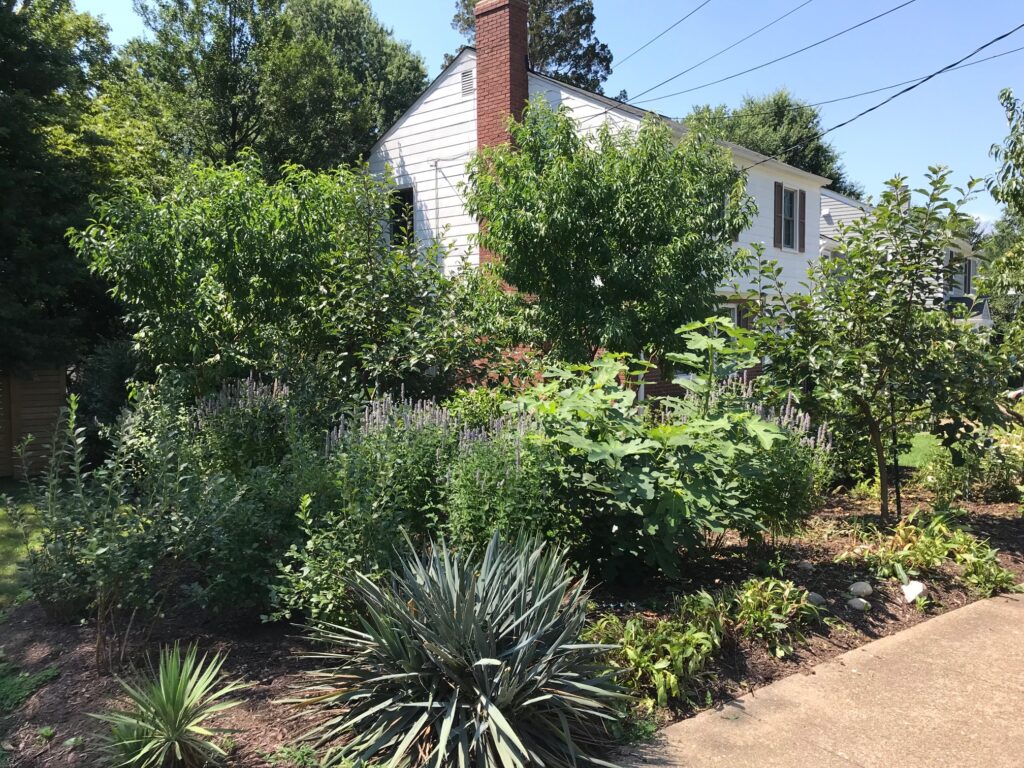
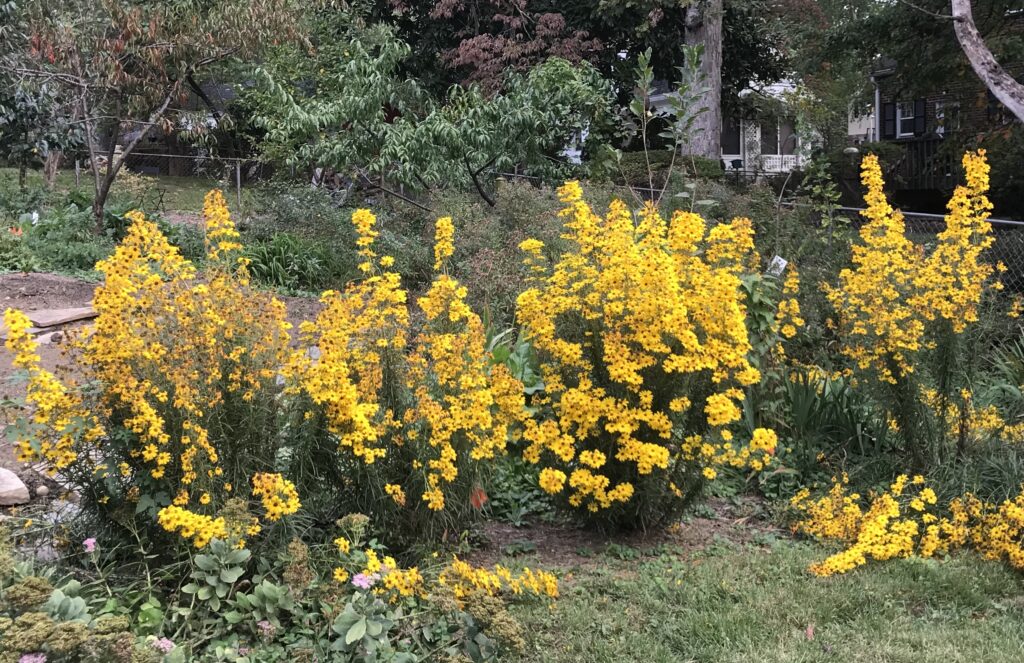

When gardens produce abundance, they create habitat for other living things. Plants, animals, insects and fungi interact with each other to create ecosystems.














What no lawn? Yes! This landscape design for a client in Arlington is full of native and edible plants instead of a lawn!
The front contains a large vegetable garden surrounded by two layers of 4′ deer fencing with asparagus in between and native meadow plants as a backdrop.
Flagstone steps take you to a terraced plateau filled with Asian pears, blueberries, persimmons, sour cherries, cornelian dogwoods, a fig and a plethora of native flowers that attract beneficial insects.
The shady back slope is held together by serviceberries, paw paws, hazelnuts, elderberries, fragrant sumac and various native ground covers and spreading perennials.
Viburnums, wax myrtles, and a few hollies surround the property to provide privacy and bird habitat.
A couple of black gum trees (Nyssa sylvatica) provide shade for an open forest floor of edible ostrich fern and other woodland natives.
Ornamental, Edible and Native Landscape
A plethora of plants both front and back are traversed by curved pathways and stone walls. The cut flagstone front walk leads you through a mix of classical ornamentals like boxwood, peonies, tulips, and crape myrtles with unusual ornamental edible plants like black lace elderberry, rugosa roses, aronia berry, lavender and some native ornamentals like pink turtlehead, rhododendron and virginia sweetspire.
The two mulch paths in the back carry one through a canopy of twisted and muscular American Hornbeams on one side and a tasty grove of currants and elderberries on the other both leading to a gazebo surrounded by pawpaws, and mature hardwoods.
The back contours are accented by curved retaining walls that ameliorate an eroding slope and terrace the ground for Asian Persimmons and Sweet Cherries. Sedges, edible ferns and day lilies make up a flat woodland clearing that serves as a play area for the kids.
The rear of the property is a daunting invasive Ailanthus grove on a steep slope. After removing the invasive species, the space gives way to a sunny slope appropriate for a food forest. It is comprised of Paw paw, Asian persimmon, Cherry and Peach. Companion plants include Indigobush, False Blue Indigo, Pink Turtlehead, Butterfly Milkweed and Anise Hyssop.
The front yard is full of edible natives like American Hazelnut, Blueberry, Elderberry and Currant paired with ornamental natives like Dogwood, Redbud, Bayberry, Echinacea, Asters and Virginia Bluebells.
We designed this food forest utilizing the sun exposure in a woodland clearing. In order to stabilize the slope we recommended terracing the slope with logs from the property. The terracing will slow down water flow and prevent erosion while the newly installed plants are getting established.
In order to maximize sun exposure, the larger trees were placed to the north and or downhill of the smaller plants. The woody plant pallet is comprised of low maintenance food bearing trees and shrubs like pawpaw, persimmon, Chinese chestnut, elderberry and blueberry. The herbaceous plants are comprised of soil building plants like comfrey and false blue indigo, insect attracting plants like echinacea and yarrow, woodland medicinals like goldenseal and american gingseng and some edible ferns.
Leaf Recycling
©2015 Danylo Kosovych and Organic Edible Gardens LLC
One of the first practices that struck me as odd when I began landscaping is the collection and disposal of the season’s fallen leaves. Leaves are a good source of organic matter and plant nutrients. You can reduce your mulch and fertilizer inputs by using what nature provided, rather than paying money or expending energy to get rid of them. If you live in a forest you can simply let them lie but like most people who have a combination of lawn, garden beds and paved surfaces the leaves will need to be processed in one of three ways.
Deciduous trees drop their leaves each fall storing all their energy within their roots. In mature forests the leaves fall onto the ground and whatever nutrients remain are cycled back into the system. Trees need leaf litter; it keeps the soil warm in the winter and prevents evaporation in the summer. Just as we put on more clothes in the winter to keep ourselves warm. Leaves create a warm blanket on the ground, their active decomposition creates heat. The litter of fallen leaves under the tree creates an ideal substrate for beneficial soil fungi and bacteria to grow in. The metabolic activity from these microorganisms can keep the temperature higher than in the surrounding area. The increased warmth supports microorganism activity and root growth as well as providing a habitat for insects and small animals.
The large area and number of trees in the forest keep the leaves on the forest floor. Landscape beds are much smaller and many times slightly raised in comparison to walkways and lawns. As a result, fallen leaves tend to blow off of landscape beds and collect in lower areas of the property. Shredding the leaves reduces the surface area that catches the wind, keeping them in place. They also tend to mat less, preventing the smothering of groundcovers. Shredded leaves have a more uniform color than whole leaves. Leaf mulch is an attractive dark brown and slowly decomposes, releasing nutrients to the plants, and preventing winter damage by keeping roots warm.
Shredded leaves in garden beds:
An even easier way to utilize fallen leaves is to shred them into your lawn. This takes only slightly more work than mowing your lawn. You will have to mow your lawn 2-3 times over to get all of the last leaves. All it requires is a mulching blade and closing the discharge chute. A study by Michigan State University, found that mulched oak and maple leaves reduced the amount of dandelions and increased spring green up in lawns. They reduce the prevalence of dandelions by reducing dandelion seed germination. Shredded leaves provide nutrients and organic matter to the lawn producing a thicker, greener more drought tolerant lawn.
Fallen leaves contain a small percentage of nutrients, ranging from 1-3% nitrogen, (the higher being from leguminous trees) and small amounts of phosphorous and potassium. While the percentages might be small, the sheer volume of leaves dropped by large deciduous trees creates an ample amount of nutrients. A low input lawn requires 1 pound per 1000 square feet of nitrogen per year. A heavily wooded lot can produce 100 pounds of leaves per 1000 square feet providing enough nitrogen for the year.
Leaves in the lawn before shredding:
After Shredding:
If you do not have much lawn but have vegetable gardens, then you might want to save the leaves for the compost bin. Compost improves soil porosity by loosening heavy clay soils and retaining moisture in sandy soils. It also adds beneficial microbes that support root growth and break down the organic matter into soluble plant nutrients.
A balanced compost has an equal ratio of brown (dry) and green (wet) or carbonic and nitrogenous material. An over proportionate amount of either one will result in unhealthy microbial activity. Too much carbonic material will be too dry and take too long to break down. Too much nitrogenous material will become sludgy and anaerobic producing a bad smell. Leaves and wood are good examples of brown or carbon rich materials while grass clippings, herbaceous plants and food scraps are good sources of nitrogen rich materials.
There are many beneficial uses for your fallen leaves that can save you time and money in the landscape, not to mention the fossil fuel saved by eliminating the transportation of material. Even if you use machinery to process the leaves you will not use nearly as much fuel as transportation requires. Which method you choose to process your leaves or whether you simply decide to let them be is determined by the makeup of your property.
Fall is the best time of the year to perform a lawn renovation. With temperatures slowly cooling down, an increase in precipitation and reduced weed competition, newly sown seed has a good opportunity to establish itself.
Organic lawn care means no synthetic herbicides or synthetic fertilizers. How do you manage weeds without chemical herbicides? You might ask. You can burn them, or technically heat-sterilize them, with a specially made tool designed for organic agriculture or use an organic herbicide. Both pretty much do the same thing, burn the leaves. Both methods require multiple applications.
A healthy lawn grows in healthy soil. Following a sufficient weed suppression schedule you should take a soil sample and send it off to a trusted soil laboratory for a chemical soil analysis. This will tell you what nutrients your soil has and which it is deficient in. A biologically healthy soil requires organic matter; it is the food that the microbes eat in order to produce nutrients for the plants.
Organic matter improves soil porosity (air) and holds water. Most lawn soils, especially chemically treated ones have low percentages of organic matter. In order to improve this, apply a top-dressing of well matured compost. Follow this with an aeration using a core-aerator in order to reduce compaction, work the compost into the soil and provide a good seed bed for the grass seed.
Immediately after performing the aeration, apply the grass seed. Seed selection is important as certain varieties are best adapted to our climate and varying micro-climates like sun and shade. Finally, apply organic fertilizers as recommended by the soil test. A short time later, after a little help from Mother Nature in the form of rain, you can have a more drought tolerant, lush green lawn for your children to play in without the health risks of synthetic pesticides or contamination of the watershed.
We designed zones 1 and 2 of a 13 acre permaculture homestead in Purcellville, Virginia. Zones 1 and 2 refer to the most visited and maintained areas on a property. They are also the areas closest to the house.
In the immediate areas surrounding the house we included a chicken coup with surrounding paddocks. Each paddock contains plants that are harvested at similar times of year. For example, one fenced in area contains summer ripening fruits, while another contains fruits that are ripe in the spring or fall. This way the chickens can be kept out of the gardens when the fruit is ripe, but can roam freely through the gardens at other times.
In the front of the house is an extensive annual vegetable garden laid out on contour with keyhole herb beds and keyhole perennial vegetable beds.
All of the water draining off of the back of the roof fills a pond designed for edible aquatic plants and native fish. The pond captures valuable fresh water and turns it into a beautiful and productive body of water.
Extending out further from Zone 1 we designed 2 large forest gardens containing nearly every fruit and nut that can be grown in this area. Accompanying the food producing trees and shrubs are nitrogen fixing, dynamic accumulating, beneficial insect attracting and pest confusing herbaceous perennial plants. The fruits and nuts include Peach, Apple, Cherry, Almond, Filbert, Pawpaw, Persimmon and various berries.
Lining the driveway are 12 English Walnut trees and 24 Mulberry trees, creating a shaded enclosed entrance to the property. The Mulberry trees act as a buffer to the plant growth inhibiting compound emitted by walnut trees called Juglone.
Extending further out from the driveway are two single row grape trellises accompanied by Rugosa Roses and Lavender. The roses and lavender not only add beauty to the front of the property but also aid in pest and disease prevention for the grapes.
For this design, the client was ready to part with their lawn. In place of it we designed a garden with lots of flowers and food. They have a south facing front yard which is an ideal location for food producing perennial plants and a vegetable garden. The north facing back yard with mature tree canopy is the ideal location for a patio, fire pit, hammock and shade loving plants. The woody plantings are laid out on contour with infiltration swales to catch rain water. The tree species include Asian Persimmon, Sour Cherry, Asian Pear and Pawpaw. The property has a total of 18 Blueberry plants as well as Currants, Elderberry and Aronia. Herbaceous plants include Strawberry, Asparagus, Culinary herbs, dynamic accumulators, nitrogen fixers and numerous beneficial insect attracting plants.